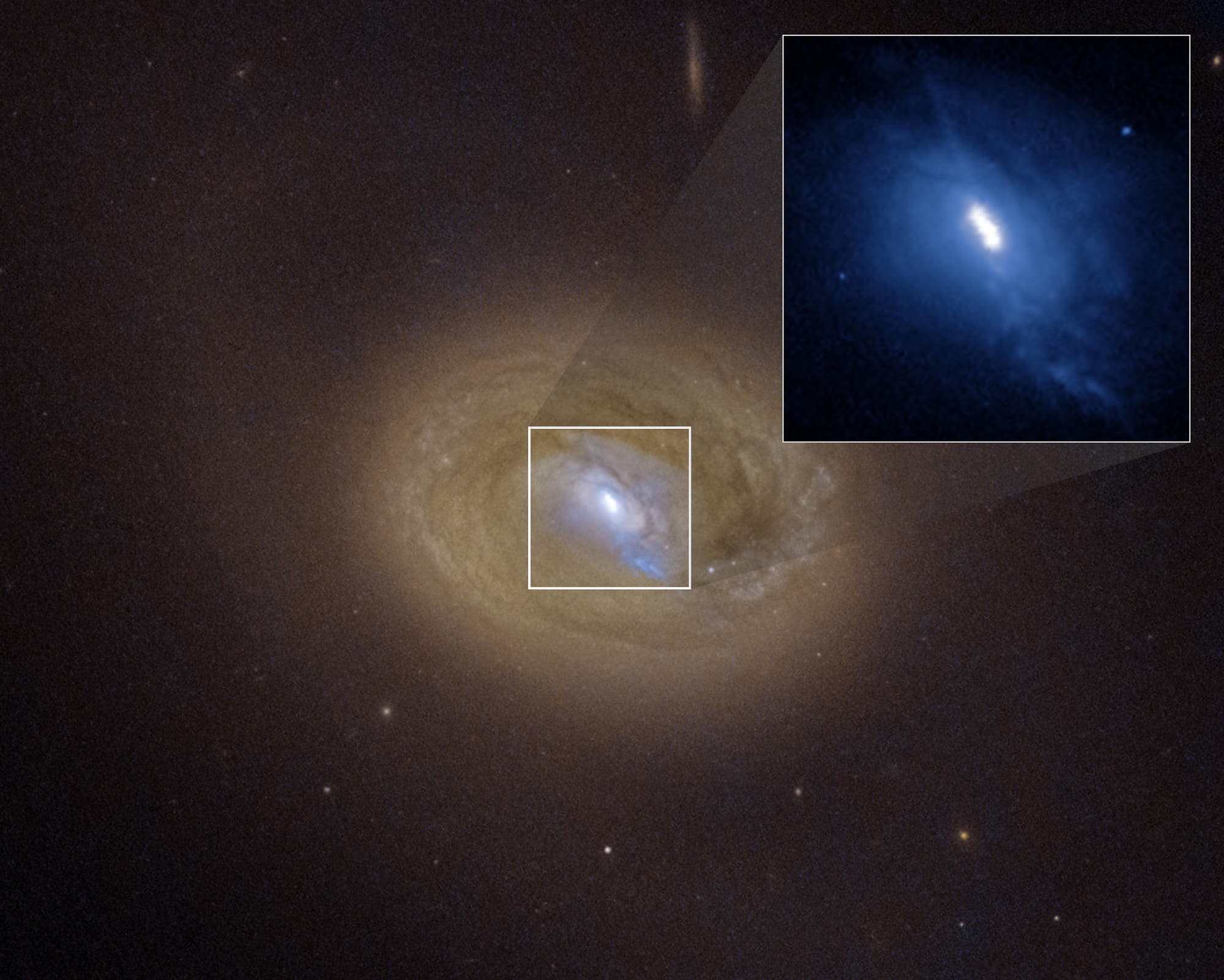The discovery was made purely by chance when a team led by Ana Trindade Falcao of the Center for Astrophysics in Cambridge, Massachusetts, Examine images of the galaxy MCG-03-34-064which shows the high-energy radiation of doubly ionized oxygen. MCG-03-34-064 is a Seyfert-type island world, meaning it has a particularly bright core region whose characteristic radiation comes primarily from hot material flowing around the central black hole. In this core region, three of the four diffraction crosses typical of HST appear a short distance apart, indicating three very bright but roughly point-shaped light sources. The diffraction crosses are created by the diffraction of light on the four-beam holder of Hubble’s secondary mirror. Since such a dense accumulation is unusual, Falcao’s team also evaluated data from the Chandra X-ray satellite to get to the heart of the matter.
In the X-ray data, two separate bright sources appeared at the center of MCG-03-34-064, coinciding with the two outer bright spots in the HST images. The temperatures there are so high that high-energy X-rays are emitted. This can be easily explained by two massive black holes absorbing larger amounts of matter and located at a small distance of no more than 300 light-years from each other. Due to conservation of momentum, the matter cannot fall directly into the black holes, but is initially accreted into a dense disk of gas and dust, the accretion disk. Here, the matter heats up so much due to friction that it emits X-rays, while also emitting radiation in other frequency bands such as the infrared, visible, or radio waves. The team was also able to find corresponding radio emissions at the locations of the two sources in archival data from the Very Large Array (VLA) in New Mexico. This further supports the theory that the sources are located in the immediate vicinity of very massive black holes.
Black holes in MCG-03-34-064 | In the spiral galaxy MCG-03-34-064, located about 800 million light-years away, two black holes orbit their common center of gravity at a short distance from each other. They appear as bright spots in images taken by the Hubble and Chandra space telescopes. The cause of the bright spot in the middle between the black holes is still unclear.
However, the third bright spot between the two black holes, seen in Hubble Space Telescope images, remains a mystery. It may be caused by a jet of hot gas emanating from one of the black holes. Its hot gas is moving at nearly the speed of light and encounters the stationary gas between the black holes at the spot’s location, causing it to suddenly brake and emit radiation.

“Total coffee aficionado. Travel buff. Music ninja. Bacon nerd. Beeraholic.”







More Stories
Exploding Fireball: Find the meteorite fragments
Neuralink's competitor lets blind people see again with an implant
A huge meteorite has hit Earth – four times the size of Mount Everest